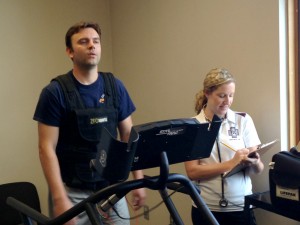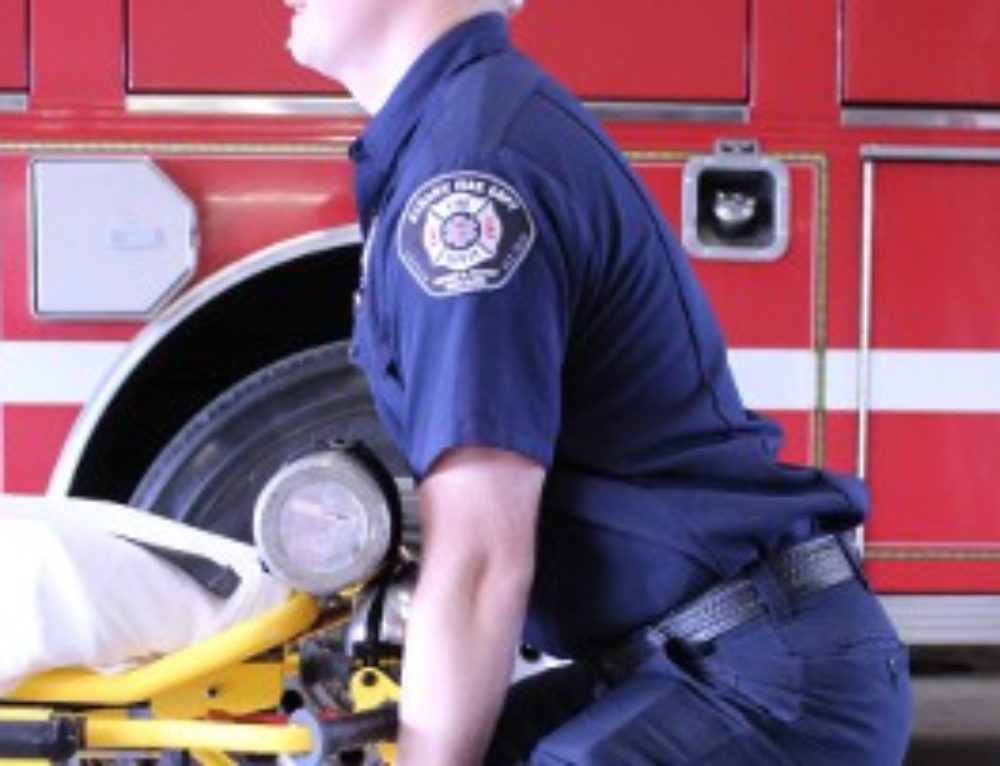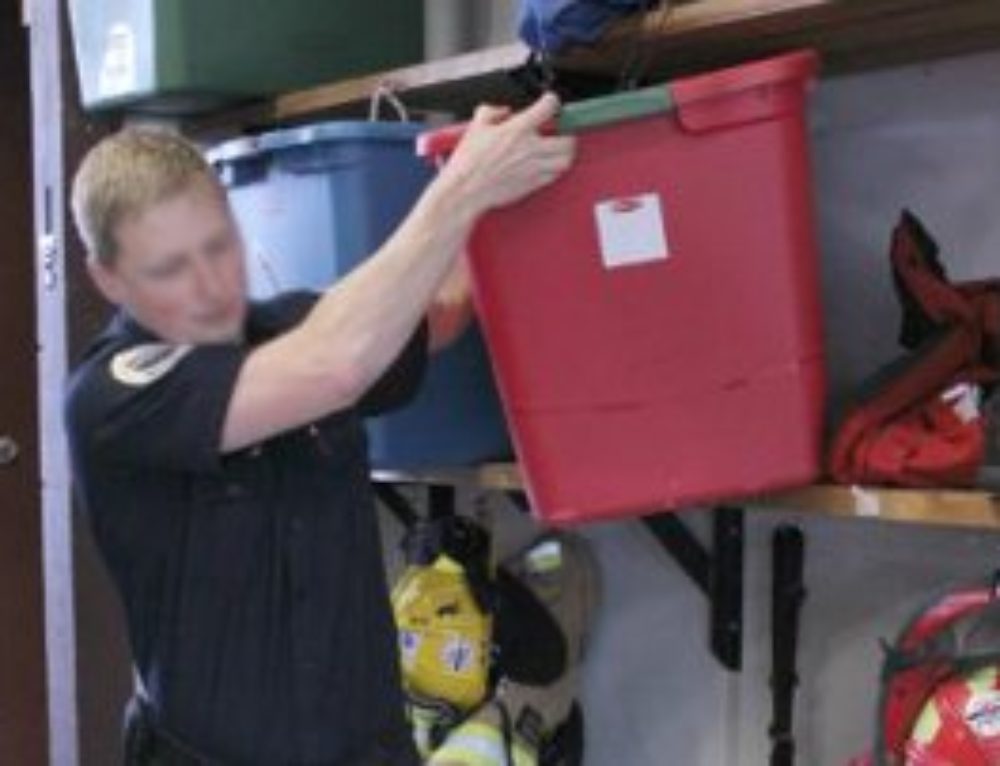 I’ve been consulting with fire departments to help improve their firefighters’ health for quite a few years. One common issue is confusion about the difference between a firefighter physical abilities test, a fitness test and a physical, and why firefighters need/can benefit from all three of these things.
I’ve been consulting with fire departments to help improve their firefighters’ health for quite a few years. One common issue is confusion about the difference between a firefighter physical abilities test, a fitness test and a physical, and why firefighters need/can benefit from all three of these things.
So today, I’m going to clear up that confusion. Then next week, I’m going to outline for you exactly what is needed in a comprehensive, effective Wellness program for firefighters, including how to meet the NFPA 1583 standard on health related fitness programs for fire department members.
Firefighter Physical Assessments Explained
The Firefighter Physical Ability Test
You’re probably familiar with a Firefighter Physical Ability Test, or Physical Agility Test. It involves firefighting job tasks such as pulling hose, climbing a ladder, etc. Some departments use the CPAT while others create their own courses. Some departments only require that a firefighter pass the test at the beginning of his career while others do the test yearly.
What this test tells you is whether or not the firefighter can perform the job.
What this test does not tell you (although it may be obvious) is whether or not he can consistently do the job safely.
Firefighter Fitness Test
A yearly firefighter fitness test is recommended by the NFPA. It assesses firefighters’ in the 5 components of fitness: body composition, muscular strength, muscular endurance, flexibility and aerobic capacity (VO2max). This would involve push-ups, a treadmill endurance test, etc.
A fitness test on a firefighter can be the same as any fitness test with one exception: the VO2max test should be firefighter specific. Making the test more representative of your job (than the running or stepping tests) makes it much more effective at evaluating whether you are aerobically fit enough to do your job without over-exerting your cardiovascular system and having a heart attack. For this purpose I created a scientifically validated firefighter VO2max test that you can do at your stations (and I plan to teach you all how to do it!)
This test helps evaluate if the firefighter can do the job safely. By measuring his strengths, weaknesses and the fitness component that can predict his risk for heart attack (VO2max), you can assess his risk for hurting himself or his crew members (it also tells the firefighter a lot about her health and risk of developing disease.)
What this test does not assess is firefighting skill. This is important to acknowledge because research shows that veteran firefighters can perform tasks more efficiently. Therefore, being more skilled can make up for a lower fitness level. This means you should assess both skill and physical fitness of the firefighter.
The Firefighter Medical Physical
A medical physical is recommended by the NFPA. Since firefighters are at increased risk of developing heart disease, cancers and other illnesses, they should regularly be assessed by a physician who is familiar with firefighting, ideally annually or at least every 2-3 years.
A firefighter’s blood work alone can provide a ton of insight into his risk for heart attack. Research shows that almost all of firefighters who suffer fatal cardiac events on duty possess one or more of the risk factors for heart disease – and two of these are identified in a typical blood panel: cholesterol and blood glucose. Markers of inflammation and cancerous growths can also be identified in the blood.
It is very important that firefighters monitor their blood pressure since being hypertensive increases the risk for dying of a duty related heart attack 12 times. Seeing a physician who can prescribe hypertension medication if necessary could save a firefighter’s life.
Either the VO2max test in the fitness assessment or the medical physical can include stress testing with an EKG, which can identify arrhythmias and cardiac conditions that could be fatal for firefighters.
The benefits are many and varied
So you can see that these three assessments measure different things and each have distinct benefits. Undergoing these tests carries big benefits for both the firefighter personally (lower injury/heart attack risk, better job performance, higher quality of life) and for the department (reduced injury, medical and overtime costs).
Next week, I’m going to outline for you exactly what is needed in a comprehensive, effective Wellness program for firefighters, including how to meet the NFPA 1583 standard on health related fitness programs for fire department members.
To read more about my scientifically validated firefighter VO2max test click here.
If you’re not on my list to get more health tips like these, enter your name and email below.





Karlie,
I trust this finds you and Ty well.
I have one comment which you may be addressing in next weeks installment pertaining to physicals under NFPA. I think you may have created an out for dept’s to cheap out with this statement; ideally annually or at least every 2-3 years.
The one place CFD does not skate for the cheap is here. Under 30 initial and every 3 years, under 40 initial and every 2 years, 40+ annual. There isone exception to this for HazMat tream members; labs every 2 years.
Thanks for reading.
Douglas
Thanks Douglas for that info. I know CFD puts a lot of resources toward medical physicals and I can say, since I assess the health and fitness level of each of them every year, that it has paid off (on the whole, they are healthier than the average FD). I absolutely agree that firefighters over 40 should have a physical every year, I just try to keep my articles as short as I can so I guess my lack of explanation was in an effort to be brief!
Not “at least every 2-3 years,” nor “should be annually.” NFPA 1582 clearly states that a baseline physical should be performed after hire but before participating in firefighting duties and annually thereafter.” There should be no wiggle room. While I agree it is expensive and once every couple years might be better than nothing, we MUST hold agencies accountable to the professional standards and get them to make the commitment to their most important resource. The firefighter!!!
Thanks for your input Rob!
Rob,
I agree with you 100%. I would also like to see other minimum measurables other than a 42 Vo2 max. That should have to be met. The non punitive part is great at getting people to participate but also pulls all the teeth.
Hello Karlie, good article. You do a nice job of describing the difference in assessments. One difficulty that I have discussed with numerous fire rescue athletes is “how to assess their current level of fitness.” Often times the test that the WFI or NFPA utilize require expensive equipment and can be time consuming. So, here is a way for firefighters, emts and medics to easily or I should say conveniently assess their level of fitness. Let me know your thoughts.
http://www.firefighternation.com/article/firefighter-fitness-and-health/5-tests-measure-your-fireground-fitness
Stay safe and healthy,
Aaron Zamzow